Flying is full of acronyms. GUMP, ADS-B, BFR, NTSB, ASRS, AOPA, EAA, NBAA, GA, WOXOF, NORDO, GPS, ILS, VOR, FARs, the 6 T’s – the list goes on. Add online chatting and texting and it’s almost TMI. In engine data analysis we have our own acronyms, and the last page of the Savvy analysis report form explains what they mean.
In this puzzler I want to cover GAMI, GIGO and FOD. Not actually GAMI the company – whose research and innovation gave a much-needed boost to GA when it needed one. GAMi as in spread – the calculation of mixture distribution determined by comparing the EGT peaks as fuel flow changes. GIGO stands for garbage in garbage out, and FOD is foreign object damage.
With GAMI sweeps, we get the most reliable results by beginning the test at 100º F rich of peak, then leaning to the onset of engine roughness, then richening back to the setting for 100º F ROP. We like to have a series of three such sweeps for reliable analysis. Here’s a set of sweeps with excellent pace, and consistent rich start points and lean end points. (The blue trace is fuel flow.)

Now let’s zoom in to the last sweeps in the series.
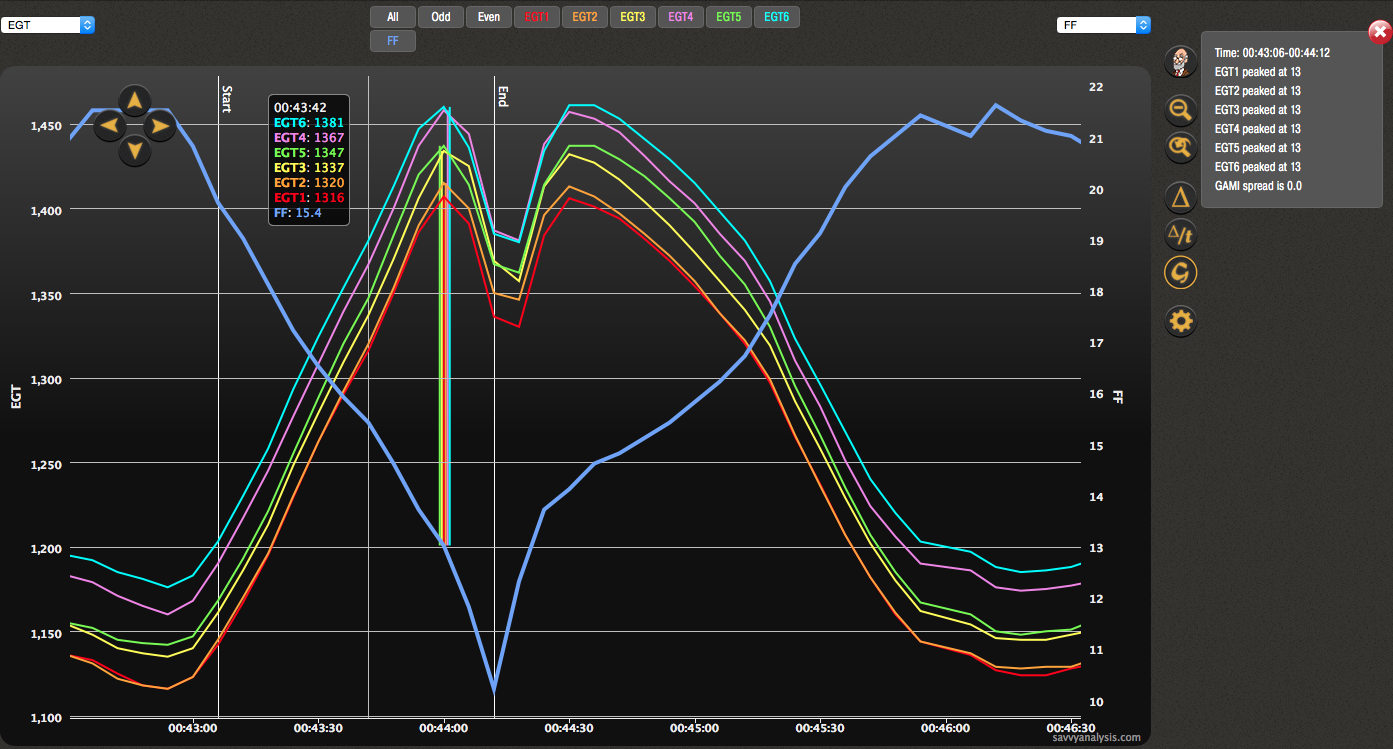
This is as good as it gets. All EGTs peak together, then start back down on the lean side of peak. With our GAMI tool, we set a start and end point and the calculation on the right indicates a spread of 0.0 GPH – GAMI GR8ness. Now let’s move to the peak after this one.
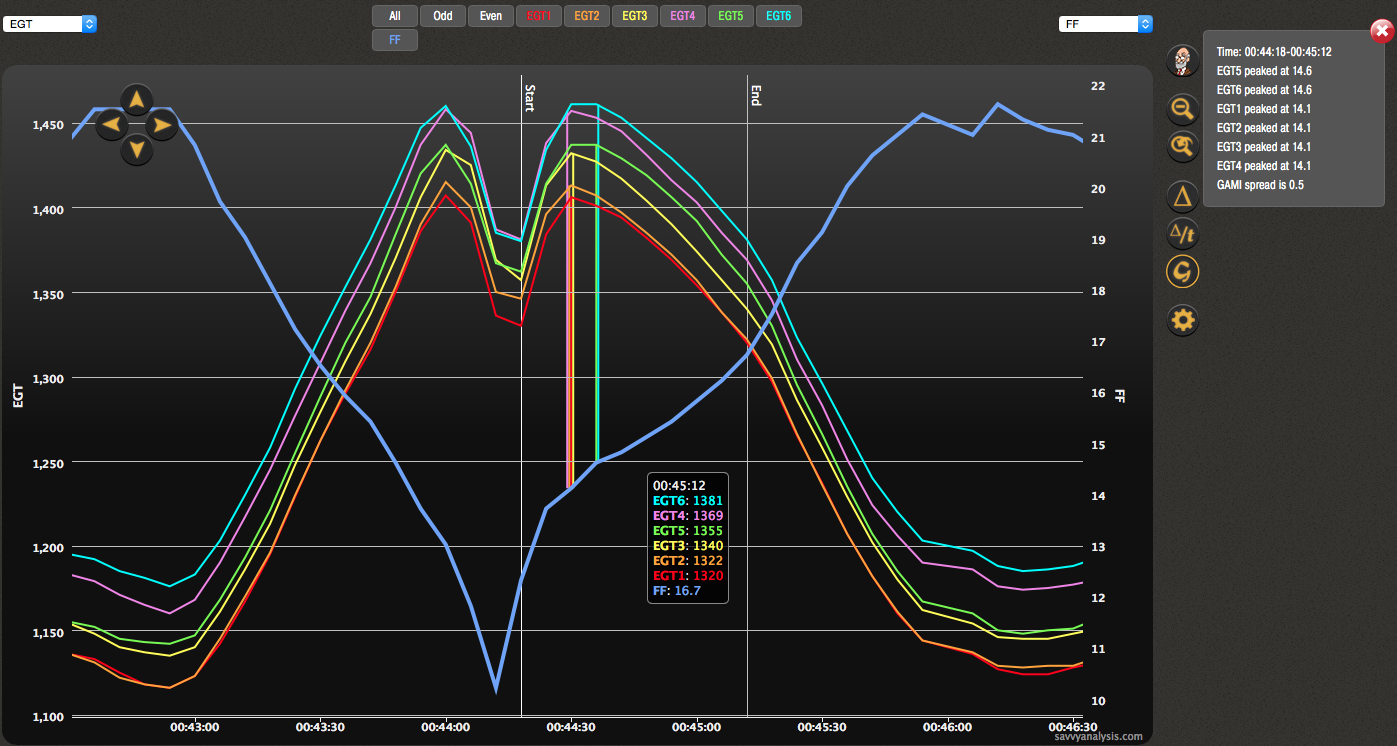
Same injectors, less than a minute later, so the puzzle is why does it suddenly become 0.5 GPH? Look closely at EGTs and you see the blue trace and the green trace peak, then maintain that value for 1 sample – in this case the default Avidyne sample rate of 6 secs. EGTs 5 and 6 don’t go up, they just don’t go down like the others, because the rate of richening is not exactly linear. So there’s less of a defined peak than in the previous sweeps. We know a perfectly consistent rate is tough on any airplane, and tougher on those without vernier mixture controls, and oh BTW you’re busy flying the plane and avoiding that TFR. A 0.5 spread is still excellent, but this is why we like a set of sweeps – so we can draw meaningful conclusions.
Now that we’ve seen perfection, let’s look at GIGO.
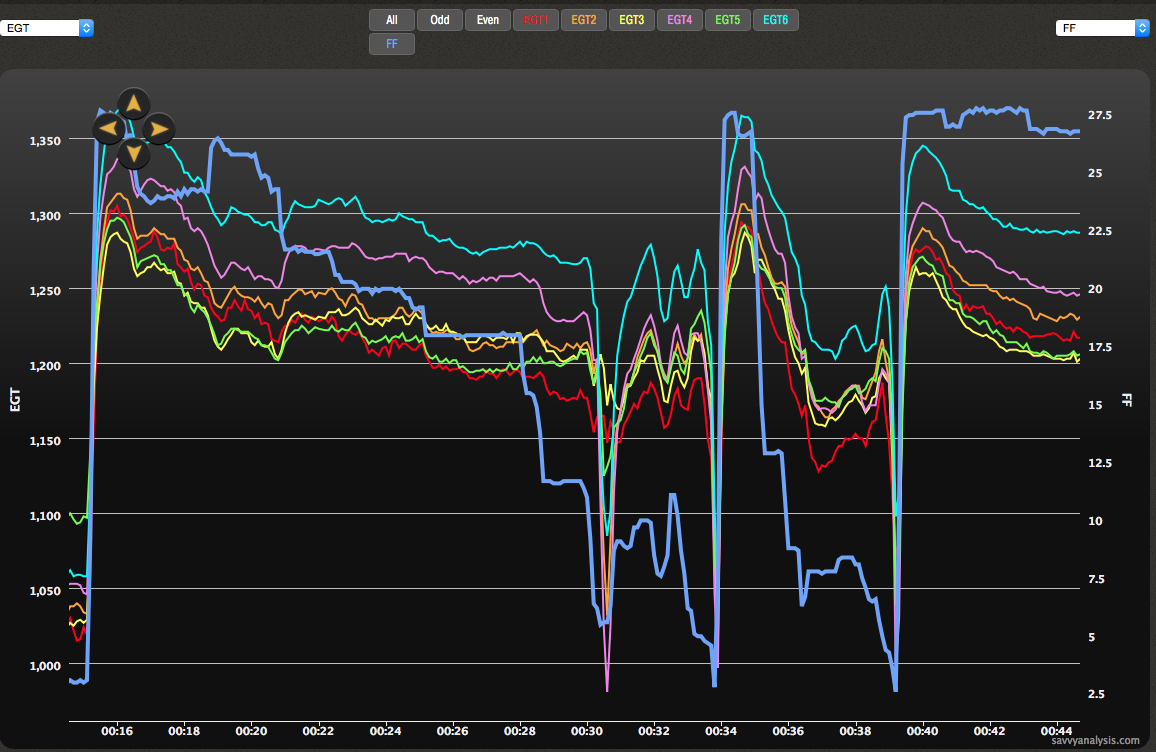
Garbage may be a little harsh, but GAMI sweeps like this don’t give us good data to analyze. Rather than give you garbage out, we’ll ask for another set of sweeps to avoid a CWOT.
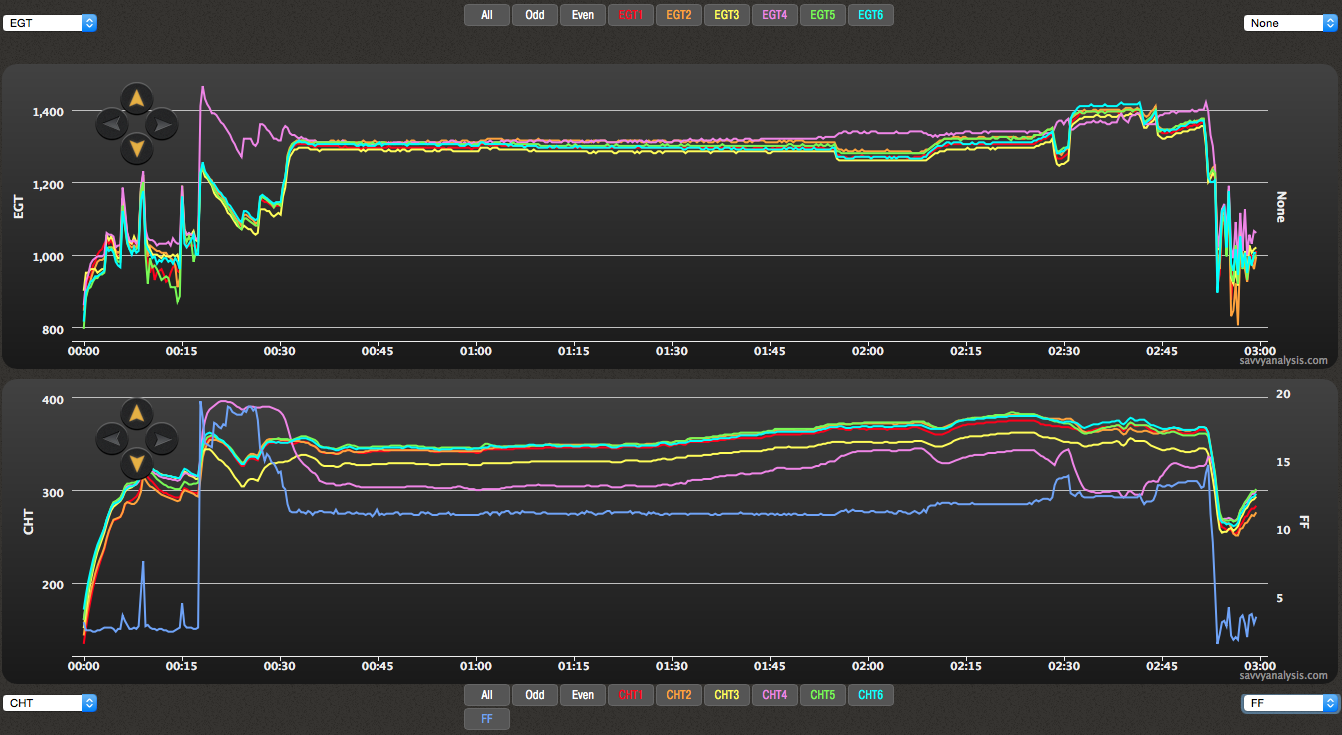
Here’s a 3-hour flight from an RV-10 with a Lycoming IO-540. No test profile on this one, just normal takeoff, cruise and landing. FF is the blue trace on the bottom. Something is clearly amiss with cylinder 4. EGT and CHT are both abnormal, which pretty much rules out a loose connection or failed probe. This looks real. Cylinder 4 is leanest during ground ops, runup, takeoff, climb and cruise, until the 02:30 mark when it suddenly becomes richest and CHT 4 drops. That lasts for a little over 10 minutes then it’s back to lean again.
Our first puzzle clue is that CHT follows EGT. That points away from ignition and plugs and toward a fuel issue like a clogged injector. That’s what we reported, and the RV-10’s owner removed this piece of FOD from the injector boss. Not the penny – the little black thing.
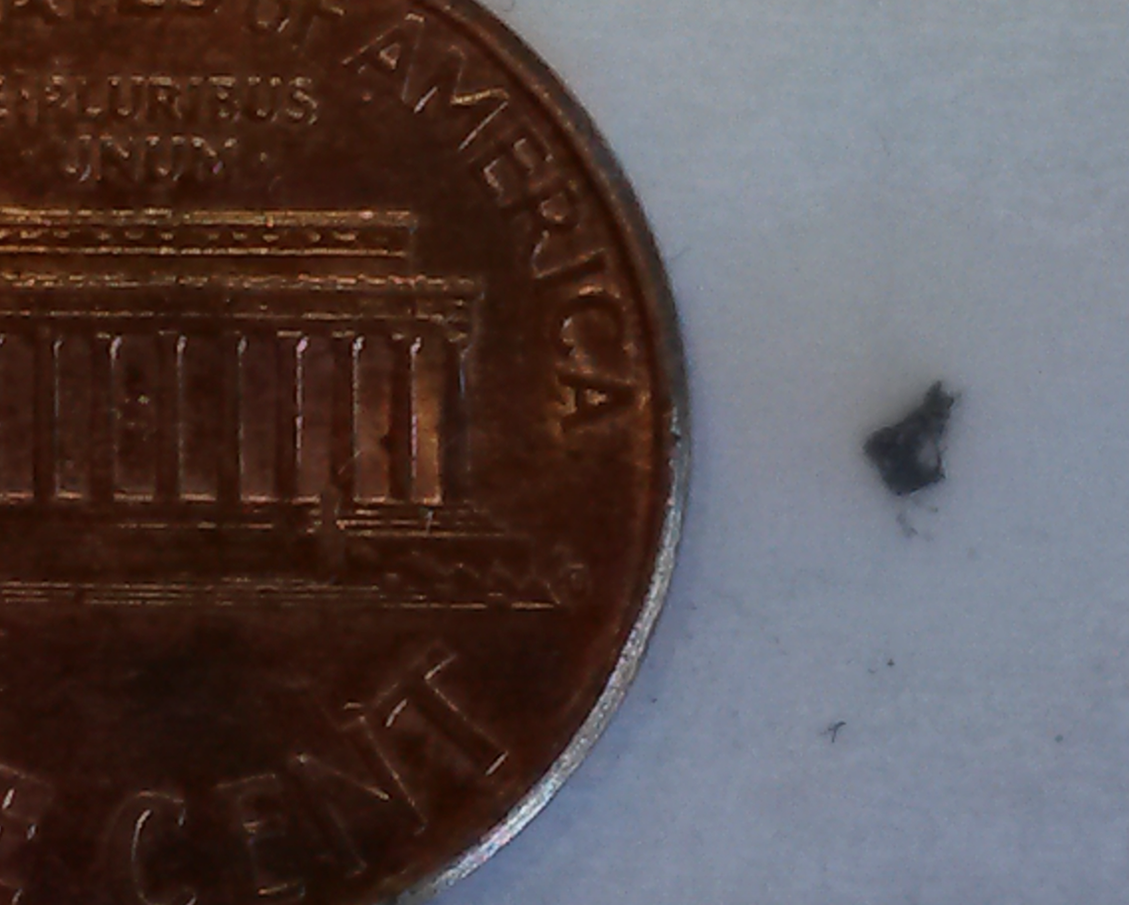
Last is data from a 23 minute flight in a Bearhawk with a Lycoming O-360. The owner reported that the engine stopped producing power in flight, then recovered when he went full rich. He was near an airport so returned for a successful landing, then the engine quit when he added power while taxiing on a hill.
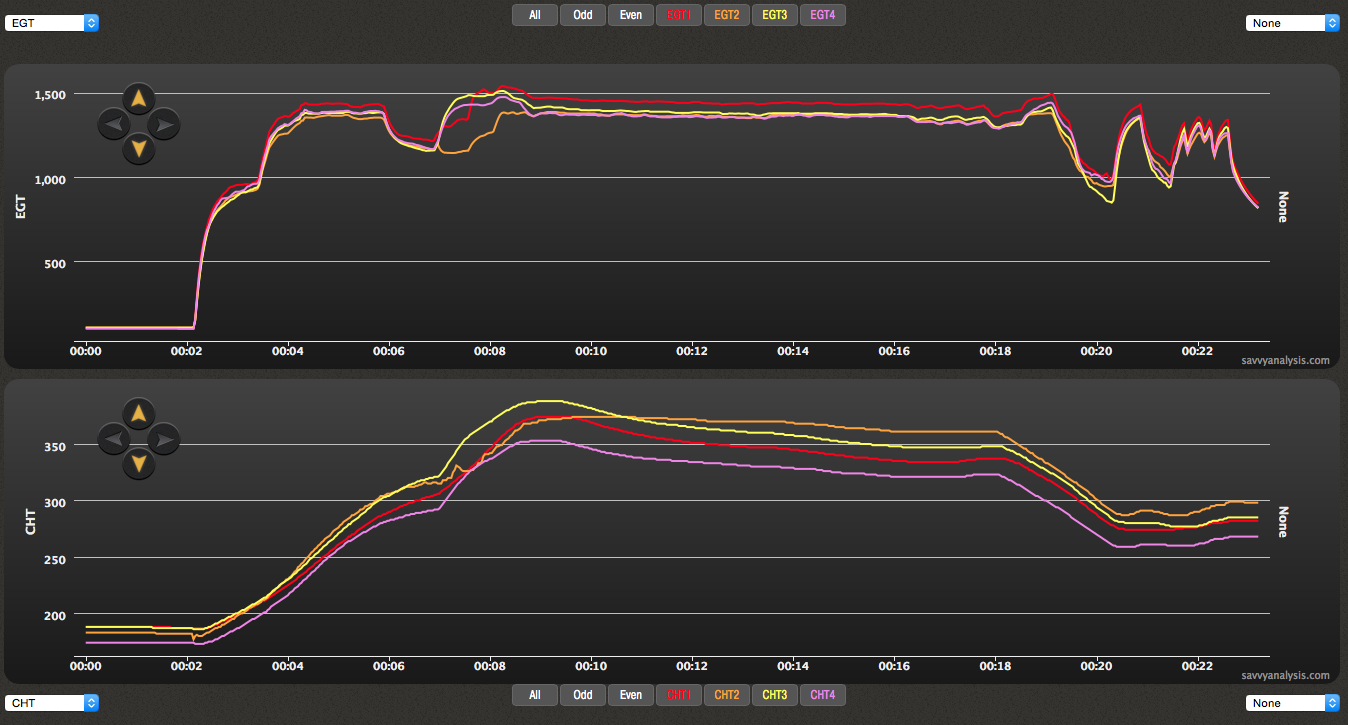
The data doesn’t offer much clue for the fuel starvation issue. EGTs 1 and 2 are a little strange at takeoff – 2 more than 1 – and 2 has an odd CHT climb. But all looks ok in cruise. It’s a high wing airplane with a carburetor, so no fuel pumps to consider. It was, frankly, a puzzler. As an analyst, you try and exhaust solutions inside the box before thinking outside of it. For instance, we didn’t immediately say “we recommend pulling the carburetor apart and checking for a small red piece of RTV that has been there since the drain plug was installed about 40 hours ago and has now degraded to a size small enough to cause random trouble.” If we had, our client may have been ROFL. On his own, he decided to investigate, pulled the carburetor apart and found the culprit.
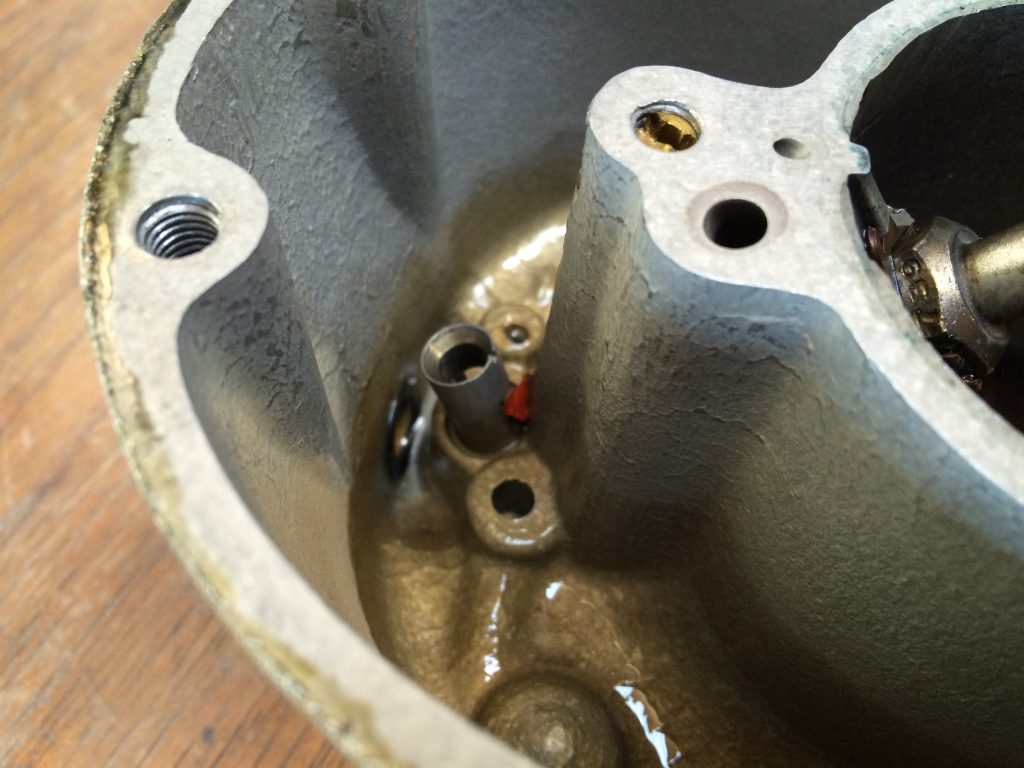
TNX and TAFN.